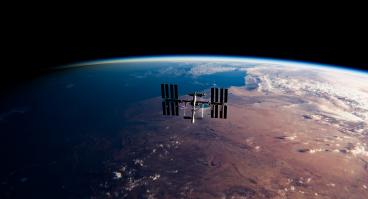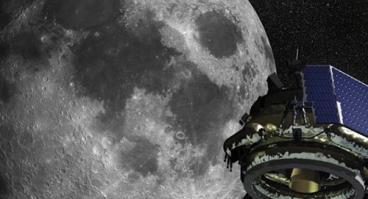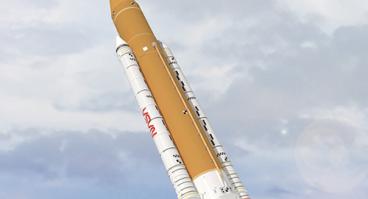International Cooperation & Space Exploration

Table of Contents
Author(s)
George W.S. Abbey
Former Senior FellowShare this Publication
- Download PDF
- Print This Publication
- Cite This Publication Copy Citation
Abbey, George W.S. 2021. International Cooperation and the Continuing Exploration of Space. Policy Brief: Recommendations for the New Administration. 02.26.21. Rice University’s Baker Institute for Public Policy, Houston, Texas.
Tags
This brief is part of a series of policy recommendations for the administration of President Joe Biden. Focusing on a range of important issues facing the country, the briefs are intended to provide decision-makers with relevant and effective ideas for addressing domestic and foreign policy priorities. View the entire series at www.bakerinstitute.org/recommendations-2021.
Led by the United States for the last 20 years, Canada, the 16 member nations of the European Space Agency (ESA), Japan, and Russia have all very successfully worked together flying and operating the International Space Station (ISS). The space station has proven to be an outstanding model for cooperation by the nations of the world.
International Partners
When it was originally initiated, the station program included partnerships with Canada, the European Space Agency, and Japan. In the early 1990s, when the program went through a major redesign, Russia was made a partner in the program. That had several immediate benefits: Russia’s capability to fly cosmonauts to space gave the program dual access to the station, using both the space shuttle and the Russian Soyuz spacecraft. This capability has proven its value a number of times during the 20-year lifetime of the station. Bringing Russia into the program also provided a rescue capability to the station. One or two of the Soyuz spacecrafts is left docked to the station for six months at a time, providing a rescue spacecraft that can return the three or six crew members safely to Earth in case of an emergency. When they became partners in the program, the Russians were also still operating the Mir Space Station; as a result, Phase I of the International Space Station included the space shuttle flying to and docking with the Mir station. This phase of the ISS program proved to be invaluable in developing the capability to work effectively together and to learn how to operate and support station operations in orbit. It was essential to ensuring the subsequent success of the International Space Station.
The other partners have also made significant contributions to the success of the station. Canada’s contribution to the ISS, the Mobile Servicing System, is a sophisticated robotics suite that plays a critical role in the station's operations and general upkeep. The European contribution to the International Space Station includes several modules, including the Columbus laboratory, supply ships, the Automated Transfer Vehicles (ATV), launch vehicles to support the station, and software. Japan has supplied the Japanese Experiment Module, H-II Transfer Vehicles (TV’s), a remote manipulator system, an experiment airlock, and an exposed facility. Italy, independently from ESA, supplied the Space Shuttle Multi-Payload Logistic Modules (MPLM). And astronauts from all these countries and cosmonauts from Russia are crew members for missions of up to six months in duration on board the station. The command of the station also rotates between the astronauts of the respective partner nations and cosmonauts from Russia. Mission Control Centers that support station operations are located in Canada, Europe, Japan, and Russia and all work together in ensuring the effective operation of the station.
A Model for International Cooperation
The international cooperation exemplified by the International Space Station is a model for cooperation by the world community. It has proven to be successful as individuals and nations have worked together, sharing common goals and objectives in the exploration of the unknown and of scientific knowledge.
There are many other similar areas where cooperation provides great benefits. Science and technology are being pursued and advanced throughout the world community; working with other countries can provide access to valuable additional expertise, shared costs, and the pursuit of complementary lines of effort, all helping to avoid duplication of efforts. The result is faster progress on efforts that share common goals, and the ability to achieve success at a lower cost. The pursuit of research that eliminates the destructive coronavirus raging throughout the world is an excellent example of what can be gained through international cooperation.
Cooperation between countries can provide other significant benefits for all, including finding cures for diseases, mitigating the effects of climate change, improving nuclear reactor safety, or guarding against and eliminating terrorism. Mutual collaboration can also be of benefit diplomatically; existing relationships can be valuable when differences or problems arise in other areas.
International cooperation as exhibited by the space station and in science and technology also develops personal relationships across international boundaries. This can bring unexpected dividends as engineers and scientists assume other roles of significant responsibility in their respective countries. Individual relationships forged through collaborative efforts often build long-lasting trust and respect.
Conclusion
The 20-year history of the space station would be dramatically different without the support of Russia as a partner. After the tragic loss of space shuttle Columbia, the United States completely relied on Russia to continue its presence on the station. And even in the face of the shuttle program, Russia carried American astronauts to and from the station. In addition, Russia has provided the ever-present Soyuz spacecraft as rescue vehicle, then and now. It has proven to be a long-lasting and mutually benefiting relationship for both nations. As voices are raised to go our own way in space, our cooperation with Russia refutes such an approach. It makes the case for a space exploration program based upon international cooperation with other nations. And that international cooperation could well benefit by including other nations.
This material may be quoted or reproduced without prior permission, provided appropriate credit is given to the author and Rice University’s Baker Institute for Public Policy. The views expressed herein are those of the individual author(s), and do not necessarily represent the views of Rice University’s Baker Institute for Public Policy.


